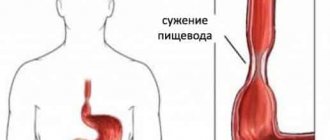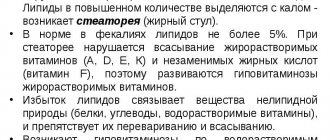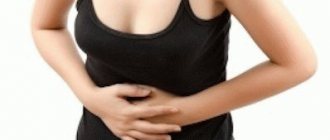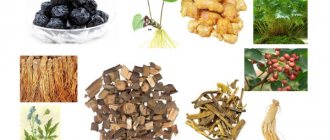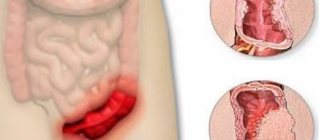Reflux of stomach contents into the esophagus in children is not so rare. But, unfortunately, it is not always diagnosed on time due to the ambiguity of symptoms and difficulties in examining the child.
Esophagogastric reflux can occur in a child at any age. But its manifestations depend on the age of the child and can take several “masks.” Synonyms for this disease are reflux esophagitis or gastroesophageal reflux disease.
Symptoms
Heartburn, or acid indigestion, is the most common symptom of GERD.
Heartburn is described as a burning pain in the chest. It starts behind the breastbone and moves to the throat and neck. This can last up to 2 hours and is often worse after eating. Lying down or bending over after eating can also lead to heartburn.
Children under 12 years of age often have a variety of symptoms of GERD.
They have a dry cough, asthma symptoms, or trouble swallowing. They will not have classic heartburn.
Each child may have different symptoms.
Common symptoms of GERD in children are:
- frequent burping or burping;
- poor appetite;
- pain in the stomach;
- the child is excessively capricious during feeding;
- frequent vomiting or retching;
- hiccups;
- labored breathing;
- frequent cough, especially at night.
Other, less common symptoms:
- the child often catches colds;
- frequent ear infections;
- sore throat in the morning;
- sour taste in the mouth;
- bad breath;
- loss of teeth or decay of tooth enamel.
Symptoms of GERD can be similar to those of other diseases.
Long-term hyperacidity in the esophagus can lead to the pre-cancerous condition Barrett's syndrome, which later develops into esophageal cancer if the disease is not controlled, although this is rare in children.
Types of reflux
By degree of difficulty there are:
- Uncomplicated reflux is a natural condition for a child’s body, which goes away with age and as the digestive organs develop. The frequency of regurgitation with it is 1-4 times a day, the baby’s weight is stable and his well-being does not suffer.
- Complicated reflux leading to esophagitis (inflammation of the esophagus) or reflux disease requires treatment. The onset of the disease can be suspected by frequent vomiting, weight loss, refusal to eat, and forced positioning of the back and neck. Pathological gastroesophageal reflux also manifests itself as a cough in the absence of respiratory tract infections.
According to the predominant contents thrown into the esophagus, refluxes are distinguished:
- Alkaline, in which there is a reflux of substances from the stomach and intestines with an admixture of bile and lysolecithin; the acidity in this case exceeds 7%.
- Sour – promotes the entry of hydrochloric acid into the esophagus, reducing its acidity to 4%.
- Low acid – results in an acidity of 4 to 7%.
Causes of the disease
Gastroesophageal reflux disease in children is caused by incompetence of the lower esophageal sphincter. The esophageal sphincter is a muscle at the bottom of the digestive tube (esophagus). Under normal conditions, it acts as a valve to prevent backflow.
The sphincter opens to allow food to enter the stomach, then closes. When it relaxes too often or for too long, stomach acid flows back into the esophagus. This provokes vomiting or heartburn.
The lower esophageal sphincter becomes weak or relaxes for certain reasons:
- increased pressure on the abdomen from excess body weight, obesity;
- taking certain medications, including antihistamines, antidepressants, painkillers, and asthma medications;
- passive smoking.
Some foods affect the muscle tone of the esophageal sphincter.
They contribute to its opening taking longer than usual. These foods include mint, chocolate, and high-fat foods.
Other foods provoke excessive production of acid by the stomach. These are citrus fruits, tomatoes and tomato sauces.
Other causes of GERD in a child or adolescent:
- surgery on the esophagus;
- severe developmental delay or neurological condition such as cerebral palsy.
Causes of reflux
Physiological reflux in children occurs due to an undeveloped digestive system and the baby's lying position after eating. Overeating and long-term use of anti-inflammatory medications by the child only aggravates the manifestations of this condition. Manifestations of gastroesophageal reflux are especially painful during active movements, turns and bends, which is why it is so important to remain calm after eating.
The causes of pathological reflux disease in children include:
- congenital anomalies of the digestive system;
- entry of bile into the stomach due to deformation of the gallbladder;
- hiatal hernia;
- presence of allergies;
- lactase deficiency;
- premature birth;
- spinal injury in the cervical region.
Diagnostics
Typically, a doctor can diagnose reflux after reviewing the child's symptoms and medical history as described by the parents. Especially if this problem occurs regularly and causes discomfort.
Several tests can help your doctor diagnose GERD. The diagnosis of GERD can be confirmed by one or more tests:
- X-ray of the chest organs. An x-ray can reveal that the contents of the stomach have moved into the lungs. This is called aspiration.
- Barium swallow. This method allows you to examine the organs of the upper part of the child's digestive system - the esophagus, stomach and the first part of the small intestine (duodenum). The child swallows barium, and it coats the organs so that they can be seen on an x-ray. X-rays are then taken to check for signs of erosion, ulceration, or abnormal obstructions.
- pH control. This test checks the pH, or acid level, in the esophagus.
A thin plastic tube is placed in the child's nostril, down the throat, and then into the esophagus. The tube contains a sensor that measures the pH level. The other end of the tube, outside the baby's body, is attached to a small monitor. The pH level is recorded for 24 - 48 hours. At this time, the child can go about his normal activities. You will need to keep a diary of any symptoms your baby feels that may be related to reflux. These include vomiting or coughing. You should also keep track of the time, type and amount of food your child eats. pH levels are checked and compared with the baby's activity over that period of time. - The best diagnostic test for esophagitis is an esophageal biopsy, which is often performed during upper gastrointestinal endoscopy. During an endoscopy, a flexible plastic tube with a tiny camera on the end is inserted through the mouth and down the throat into the esophagus and stomach. During this test, which takes about 15 minutes, the walls of the esophagus and stomach are carefully checked for signs of inflammation. During a biopsy, pieces of the superficial tissue layer are taken. They are checked under a microscope. The results of endoscopy will not keep you waiting long: hiatal hernia, ulcers and inflammation are easily detected. Accurate diagnoses sometimes require biopsy results, which will be available a day or two after the endoscopy.
- Esophageal manometry. This test tests the strength of the esophageal muscles. This test can help you see if your baby has problems with reflux or swallowing. A small tube is inserted into the baby's nostril, then into the throat and esophagus. The device then measures the pressure that the esophageal muscles have at rest.
- Study of the evacuation function of the stomach. This test is done to make sure your baby's stomach is moving its contents properly into the small intestine. Delayed gastric emptying can cause reflux into the esophagus.
What does it look like
As a result of the development of reflux esophagitis, you can see changes in the contours of the esophagus, ulcerations, swelling of the walls and accumulation of mucus.
During normal functioning, the muscle ring opens the lumen for the passage of food into the stomach through the esophagus and closes it tightly in a timely manner, since the peristalsis of the sphincter is not impaired.
When the muscle ring is weakened and its functionality is impaired, a pathological condition is observed. Stomach acid travels back into the esophagus with food. Gastric juice in the mass coming back causes irritation and inflammation of the esophageal mucosa. As a result of an anatomical anomaly, the stomach protrudes through a weakened diaphragm.
Treatment
Treatment for GERD in children will depend on symptoms, age, and overall health. This will also depend on the severity of the condition.
Diet and lifestyle changes
In many cases, diet and lifestyle changes can help relieve GERD symptoms. Talk to a professional about changes you can make.
Here are some tips to better manage your symptoms:
For infants:
- after feeding, hold the baby upright for 30 minutes;
- When bottle feeding, the nipple should always be filled with milk. The child will not swallow too much air while eating;
- adding rice porridge to complementary foods may be beneficial for some infants;
- Allow your baby to burp several times while breastfeeding or bottle feeding.
For older children:
- Keep an eye on your child's menu. Limit fried and fatty foods, mint, chocolate, caffeinated drinks, carbonated drinks and tea, citrus fruits and juices, and tomato products;
- Encourage your child to eat less at one meal. Add a small snack between feedings if your baby is hungry. Do not allow your child to overeat. Let him tell you when he is hungry or full;
- Serve dinner 3 hours before going to bed.
Other methods:
- Ask your doctor to review your child's medication prescriptions. Some medications may cause irritation to the lining of the stomach or esophagus;
- do not allow the child to lie down or go to bed immediately after eating;
- medications and other treatments.
Medicines
Your doctor may prescribe medications to relieve symptoms. Some medications are sold without a prescription.
All reflux medications work differently. The child or teenager may need a combination of medications to fully control symptoms.
Antacids
Doctors often first recommend antacids to relieve reflux and other symptoms of GERD. The doctor will tell you which antacids can be given to your child or teenager. The most common are Maalox, Gaviscon, Almagel.
H2 blockers
Stomach H2 receptor blockers reduce acid production. They provide short-term relief for many people with GERD symptoms. They will also help treat esophageal conditions, although not as well as other medications.
Types of H2 blockers include:
- Cimetidine;
- Famotidine;
- Nizatidine;
- Ranitidine.
If a child or teen develops heartburn after eating, a doctor may prescribe an antacid and an H2 blocker. Antacids neutralize stomach acid, and H2 blockers protect the stomach from excess acid production. By the time antacids wear off, H2 blockers control stomach acid.
Proton pump inhibitors (PPIs)
PPIs reduce the amount of acid the stomach produces. PPIs are better at treating reflux symptoms than H2 blockers. They can cure most people with GERD. Doctors often prescribe PPIs for long-term treatment of this disease.
Research shows that people who take PPIs for a long time or in high doses are more likely to have fractures of the hip, wrist, and spine.
The child or teen must take these medications on an empty stomach to help stomach acid work properly.
Some types of PPIs are available by prescription, including:
- Esomeprazole;
- Lansoprazole;
- Omeprazole;
- Pantoprazole;
- Rabeprazole.
All drugs can have side effects. Do not give your child medications without first consulting a doctor.
Treatment with tablets
If the baby’s well-being does not improve after following the pediatric doctor’s recommendations, drug treatment is prescribed. The duration of the course of therapy and the dose should be determined strictly by the doctor, depending on the physiological characteristics of the patient. The following drugs are often used during treatment:
- Proton pump inhibitors. With the help of Omeprazole and Pantoprazole, the production of hydrochloric acid is blocked. Pediatricians prescribe Omeprazole to children over 2 years of age.
- An antacid helps neutralize hydrochloric acid. With the help of "Phosphalugel" and "Maalox" it is possible to restore the mucous membrane of the organ.
- By using the drugs Ranitidine and Famotidine during therapy, reflux in a child can be cured.
- Thanks to prokinetics, gastric motility increases. Under such conditions, the organ empties faster.
You should know that excessive regurgitation is not a harmless phenomenon. This process can lead to a significant deterioration in the baby’s overall health, since persistent regurgitation often leads to dehydration. Such loss is restored in a hospital setting. The baby is given infusion solutions. Considering the fact that the drug can cause side effects, it is important to carry out a thorough medical diagnosis of the baby before starting therapy. The doctor will take into account all the nuances and prescribe the appropriate medicine.
For kidney reflux in infants, complex therapy should be carried out. If the disease is advanced, the problem can only be eliminated surgically.
Surgical treatment
In severe cases of reflux, surgery called fundoplication may be performed. The doctor may recommend this option when the child is not gaining weight due to vomiting, has problems with the respiratory system, or has severe irritation in the esophagus.
The intervention is performed as a laparoscopic operation. This is a painless method with quick post-operative recovery.
Small incisions are made in the baby's abdomen, and a small tube with a camera on the end is placed into one of the incisions to look inside.
Surgical instruments are passed through other incisions. The surgeon looks at a video screen to see the stomach and other organs. The top of the stomach wraps around the esophagus, creating a narrow band. This strengthens the lower esophageal sphincter and significantly reduces reflux.
A surgeon performs an operation in a hospital. The child receives general anesthesia and can leave the hospital after 1 to 3 days. Most children return to their normal daily activities within 2 to 3 weeks.
Endoscopic techniques such as endoscopic stitching and high-frequency waves help control GERD in a small number of people. Endoscopic suturing uses small sutures to compress the sphincter muscle.
High frequency waves create heat damage that helps tighten the sphincter muscle. The surgeon performs both operations using an endoscope in a hospital or outpatient setting.
The results of these endoscopic techniques may not be as good as those with fundoplication. Doctors do not recommend using these methods.
Classification and degrees
Pathological reflux occurs in acute and chronic forms.
The acute form of the disease develops against the background of existing gastrointestinal diseases. The main symptoms of this form are disruption of the gastrointestinal tract, the presence of a source of infection in the body, and vitamin deficiency. The baby looks unhealthy, has difficulty swallowing, and chest pain.
The chronic course of the disease manifests itself as a complication of another disease of the digestive system. Infrequently, esophagitis occurs primarily, which is due to the specific nutrition. The chronic form of reflux occurs with severe symptoms.
Depending on the nature of the disease in a child, the following types of reflux are classified:
- Catarrhal. There is a superficial lesion of the mucous membrane without an erosive process. Manifests itself as a result of exposure to a mechanical or thermal stimulus. Conservative therapy is used for treatment.
- Hydropic. This type is characterized by thickening of the walls of the esophagus, swelling of the mucous membrane, and the esophagus narrows.
- Exfoliative. It is a severe form of the disease. There is separation of fibrin from the mucous membrane, which provokes severe coughing, soreness, bleeding and perforation of the esophagus.
- Pseudomembranous. It occurs with the formation of a gray-yellow film of fibrin on the mucous membrane, which over time gives way to ulcers and erosive formations. The child experiences nausea and vomiting; film fragments are found in the vomit.
- Erosive. A serious form of reflux is esophagitis. It occurs with redness of the mucous membrane, the development of microabscesses, and swelling of the esophageal glands. The solution to the problem is surgery.
There are four degrees of development of the disease. The symptoms and treatment regimen depend on the degree.
- In the first degree of pathological reflux, irritation of the esophagus by stomach contents is observed. Under the influence of the aggressive substance contained in the mass, the mucous membrane of the esophagus swells, becomes red, and isolated erosive lesions are recorded. Symptoms at this stage are absent or mild.
- In the second degree, esophagitis occurs with certain symptoms, which is associated with erosive damage to the esophageal mucosa. Spots measuring 3–6 mm in size are observed on the mucosa, which sometimes merge, gradually covering the entire surface of the esophagus.
- The third degree of pathology in a baby is characterized by severe symptoms. Difficulty in the swallowing process, severe pain, the formation of defects in the esophageal mucosa, and a feeling of discomfort in the stomach area are recorded. At this degree, damage to the esophagus occupies more than 70%. Ulcerative lesions merge. The child complains of a burning sensation and heaviness in the chest, especially after eating.
- The fourth degree is expressed by large-scale ulcerative lesions of the esophagus (more than 75%). The symptoms are more pronounced and constantly bother the child. The patient complains of pain in the stomach area, an unpleasant taste in the mouth, swallowing becomes impossible due to severe discomfort and burning. This stage is the most dangerous and difficult for the baby, since this is the point after which there is a risk of developing gastrointestinal cancer.
Pathological reflux is detected in most cases from the second degree, when the symptoms become severe. In the third and fourth degrees, surgical intervention is often resorted to.
Among the extraesophageal manifestations there are:
- Bronchopulmonary;
- Otolaryngological;
- Cardiological;
- Dental.
Facts parents need to know about infant reflux:
- The main signs of GERD in children are vomiting or reflux. Children may complain of a tummy ache, a feeling of pressure in the chest, a feeling of something in the throat, a burning sensation in the chest, or they may seem overly irritable or agitated.
- It is important to distinguish physiological (normal) digestive phenomena from disease. Mild spitting up is normal for most healthy, growing babies in the first year. In 95% of cases, babies will outgrow this by the time they are 12 to 15 months old. This condition is actually physiological reflux, a normal phenomenon, and not GERD. Parents can rest easy knowing that spitting up or reflux rarely persists into the baby's second year of life, or perhaps a little longer for premature babies.
- A small percentage of babies who spit up very often or severely, cry, cough, are stressed, or lose weight may actually have GERD or another condition. GERD is more common in children 2–3 years of age and older. If your child has these persistent symptoms, contact your doctor.
- Between 5 - 10% of children aged 3 - 17 years experience upper abdominal pain, belching, heartburn and vomiting - all symptoms that may indicate a diagnosis of GERD. Only a doctor can determine whether it is indeed reflux disease or perhaps another disease.
- The variety of symptoms of GERD increases as children age. It may be associated with shortness of breath, chronic cough, bad breath, sinusitis, hoarseness and pneumonia. As children get older, the symptoms of reflux disease become similar to those in adults.
Reason to call an ambulance
Reflux complicated by esophagitis must be treated. If your newborn has one or more of the following symptoms, seek help immediately:
- the child is rapidly losing weight;
- daily regurgitation in a baby less than 3 months old leads to starvation of the baby;
- categorical refusal to drink and eat during the day;
- blood in vomit or stool, severe diarrhea;
- the baby’s condition is excessively depressed, inhibited;
- pneumonia develops.
So, reflux itself, or, as people say, regurgitation, in infancy should not frighten parents, since it is understandable from the point of view of physiology and anatomy. Difficulties arise with frequent vomiting, when there is so much acid in the esophagus that it can cause damage to the mucous membrane - and this is associated with heartburn and pain for the baby. Then they talk about reflux disease.
On the other hand, pathological regurgitation is a reason to undergo a thorough examination in order to exclude the presence of concomitant serious diseases. Parental intuition and the local pediatrician will tell you that it is time for an examination.


